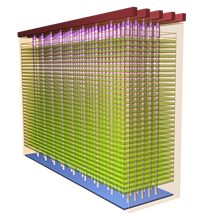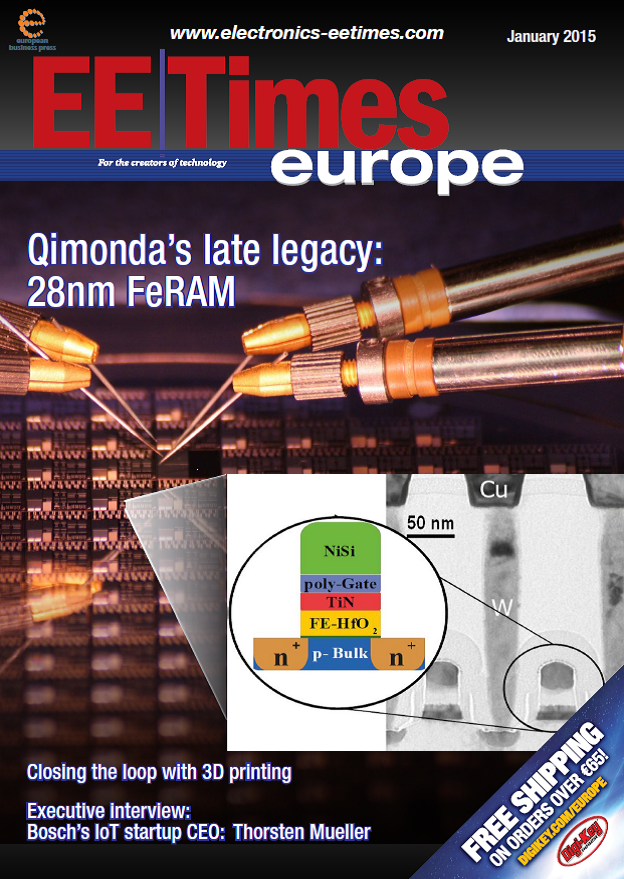Cost Action "HERALD" workshop on Fundamentals of ALD - June 8 & 9, Eindhoven
Organized by Erwin Kessels Professor in Applied Physics at Eindhoven University of Technology. June 8 (start at noon) to June 9 (end mid-afternoon). Please see http://www.nanomanufacturing.nl/
"The aim of the workshop is to spark a discussion about current topics in the field of atomic layer deposition (ALD) by addressing fundamental aspects of the method. It is expected that this discussion will lead to new and refined insights beneficial to further advance the field of ALD. The aim is to serve both scientists who work at the forefront of ALD research as well as newcomers and technologists who want to get a better understanding of ALD."
"Consistent with the aim of the event, this will be a "true" workshop in which participants are encouraged to actively take part in the presentations and discussions. During the workshop, 5 current topics within the field of ALD will be covered with ample time and opportunity for discussion and interaction. Each topic will be introduced by speaker who is an authority in the field. In the introduction, basic aspects will be presented such that non-experts can take part in the discussion while the leading edge of the current understanding will also be presented. Afterwards, a specific case will be addressed in more detail by a researcher who has studied an aspect of the specific topic in depth. This will be followed by presentations from the participants and an open discussion."
Organized by Erwin Kessels Professor in Applied Physics at Eindhoven University of Technology. June 8 (start at noon) to June 9 (end mid-afternoon). Please see http://www.nanomanufacturing.nl/
"The aim of the workshop is to spark a discussion about current topics in the field of atomic layer deposition (ALD) by addressing fundamental aspects of the method. It is expected that this discussion will lead to new and refined insights beneficial to further advance the field of ALD. The aim is to serve both scientists who work at the forefront of ALD research as well as newcomers and technologists who want to get a better understanding of ALD."
"Consistent with the aim of the event, this will be a "true" workshop in which participants are encouraged to actively take part in the presentations and discussions. During the workshop, 5 current topics within the field of ALD will be covered with ample time and opportunity for discussion and interaction. Each topic will be introduced by speaker who is an authority in the field. In the introduction, basic aspects will be presented such that non-experts can take part in the discussion while the leading edge of the current understanding will also be presented. Afterwards, a specific case will be addressed in more detail by a researcher who has studied an aspect of the specific topic in depth. This will be followed by presentations from the participants and an open discussion."
Nanomanufacturing: ALD FUNdamentals nanomanufacturing.nl Dates: June 8 & 9 Location: Eindhoven, NL The aim of the workshop is to spark a discussion about current topics in the field of atomic layer deposition (ALD) by addressing fundamental aspects of the method. It is expected that this discussion.
Speakers:
- Dr. Chaitanya Ande (Eindhoven University of Technology, NL)
- Ir. Roger Bosch (Eindhoven University of Technology, NL)
- Prof. dr. ir. Erwin Kessels (Eindhoven University of Technology, NL)
- Dr. ir. Harm Knoops (Oxford Instruments, NL)
- Dr. ir. Adrie Mackus (Stanford University, USA)
- Dr. Paul Poodt (Holst Centre / TNO, NL)
- Dr. Stephen Potts (Queen Mary University of London, UK)
- Ir. Vincent Vandalon (Eindhoven University of Technology, NL)
- Angel Yanguas-Gil, PhD (Argonne National Laboratory & Northwestern University, USA)
- ...
Discussion Leaders
- Low temperature ALD – Suvi Haukka (ASM Microchemistry)
- ALD of nitrides– Riikka Puurunen (VTT Technical Research Centre of Finland)
- ALD of metals – Simon Rushworth (EpiValence)
- ALD of multi-element oxides – Chris Hodson (Oxford Instruments Plasma Technology)
- Spatial ALD vs Temporal ALD – Dennis Hausmann (Lam Research)
Program
Important dates
- March 27 - Workshop Announcement
- April 20 - Detailed program announced
- May 1 Deadline for requesting travel support
- May 29 - Submission deadline for short presentations
- May 29 - Deadline for registration
- June 8 & 9 - Workshop!
Topics
The following topics will be addressed during the workshop:
- Low temperature ALD: what's limiting?
- ALD of nitrides: opportunities for plasmas?
- ALD of metals: what about films or nanoparticles?
- ALD of multi-element oxides: Is 1+1 equal to 2?
- Spatial ALD vs Temporal ALD: What's different?
Available soon: Click on the topics for a more detailed description and submission guidelines on how to contribute to the session.
You can participate actively in the session about low-temperature ALD by giving a short presentation or a pitch after the two presentations that are already scheduled. Please submit a short presentation clearly describing the observation, issue or open question that you would like to discuss to contact@nanomanufacturing.nl. We would like to receive your presentation before the 29th of May, which will allow sufficient time for us to evaluate your contribution. You might receive suggestions from the session coordinators to fit it in better in the session.
If your short-talk is accepted, you can chose to bring a poster in addition to giving the short talk. The poster will receive attention during the breaks and during lunch. The poster will allow you to present more background information and interesting findings which cannot be discussed during the sessions due to time constraints.
Too many good questions and discussions to tweet during the ALD Fundamentals workshop. It was a lot of #ALDep FUN!



%20(1).png)





